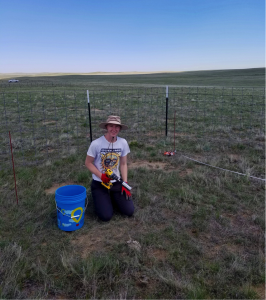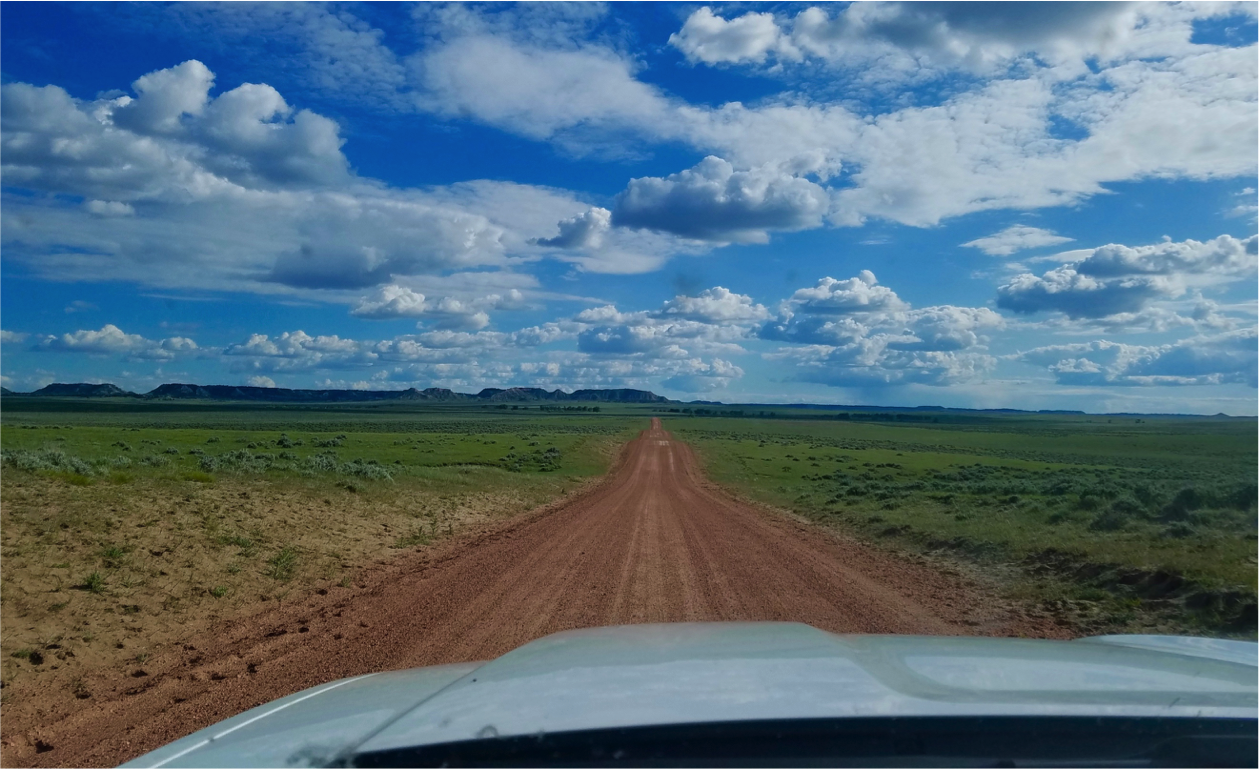Hello from Bill, Wyoming! I am currently writing from within the Thunder Basin National Grassland where one of my research sites is located. This is by far the most remote place I have ever stayed, in fact Wikipedia says the total population is 11, including pets. I’ve already spent a lot of time on the dirt roads here which has inspired me to think about the long and unfamiliar road that is a graduate research project.
After a year of planning, my journey began on a heavily traveled road, I-80. I left behind the safe haven of the New England forest and fixed my gaze upon a horizon that never ends and a sun that sets for hours. As Wyoming got closer, the land transformed in shape and color and the heavily traveled roads dissipated. When I arrived in Wyoming, it was finally time to put all my planning to use.
 Just like a dirt road, executing a research project will always have some bumps in it. One bump I had while putting in my root ingrowth cores was breaking a brand new-drill with only a third of the work done. Long story short, I now know a lot more about drills than I thought I ever could! Now that all of the root ingrowth cores are in the ground and the water and nitrogen treatments have been applied I will wait patiently for the roots to grow. As the road continues, I am certain there will be a few more bumps and unexpected turns. But I’ve realized the more you travel the road of research, the better you become at dealing with the unknowns and the road becomes more and more familiar.
Just like a dirt road, executing a research project will always have some bumps in it. One bump I had while putting in my root ingrowth cores was breaking a brand new-drill with only a third of the work done. Long story short, I now know a lot more about drills than I thought I ever could! Now that all of the root ingrowth cores are in the ground and the water and nitrogen treatments have been applied I will wait patiently for the roots to grow. As the road continues, I am certain there will be a few more bumps and unexpected turns. But I’ve realized the more you travel the road of research, the better you become at dealing with the unknowns and the road becomes more and more familiar.
There are many roads to take when planning a research project, the questions we choose to ask set our direction and the methods we use to answer them set our pace. Taking the road less traveled can be scary when you are first starting out but is the only way to progress science and to become a better scientist.

